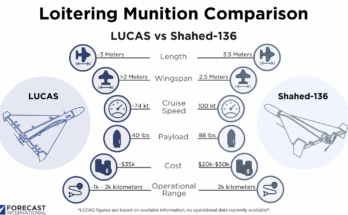
The U.S. Navy has fielded the W76-2 low-yield nuclear warhead, which is used on the submarine-launched Trident II ballistic missile. The low-yield weapon is a variant of the standard W76-1 Trident II warhead, which itself was upgraded from the W76-0 standard in a program completed in December 2018. The National Nuclear Security Administration announced in January 2019 that production of the first W76-2 had begun. The requirement calls for only a small number of warheads to be modified to the low-yield configuration.
The deployment of a low-yield nuclear capability stems from the 2018 Nuclear Posture Review, which called for additional nuclear response options as a deterrent against Russia attempting to use its own low-yield nuclear weapon in a limited first-use scenario.
The House included a provision in its version of the FY20 defense authorization bill that would have prohibited the fielding of a low-yield ballistic missile warhead. House Armed Services Committee Chairman Adam Smith (D-Wash) argued that the existing U.S. nuclear arsenal already serves as a deterrent to Russia conducting a low-yield nuclear first strike, as a U.S. nuclear response could employ a high-yield weapon. “That’s the deterrent,” he said. The House provision did not make it into the final version of the defense authorization bill, allowing deployment of the low-yield warhead to move forward.
A statement from the Pentagon said that “this supplemental capability strengthens deterrence and provides the United States a prompt, more survivable low-yield strategic weapon; supports our commitment to extended deterrence; and demonstrates to potential adversaries that there is no advantage to limited nuclear employment because the United States can credibly and decisively respond to any threat scenario.”
Shaun's deep-rooted interest in military equipment continues in his role as a senior defense analyst with a focus on the United States. He played an integral role in the development of Forecast International's U.S. Defense Budget Forecast, an interactive online product that tracks Pentagon acquisition programs throughout the congressional budget process. As editor of International Military Markets – North America, Shaun has cultivated a deep understanding of the vast defense markets in the United States and Canada. He is a regular contributor to Forecast International's Defense & Security Monitor blog and has co-authored white papers on global defense spending and various military programs.




